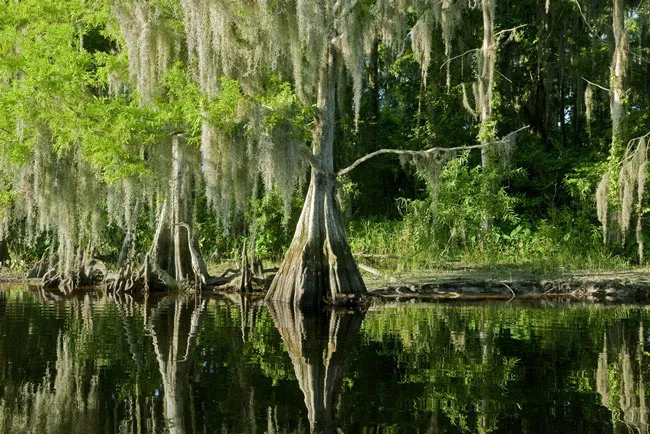The Everglades, a UNESCO World Heritage Site, is not only an ecological wonder but also a treasure trove of history and legends. From indigenous tribes who lived there thousands of years ago to fierce struggles for survival, the Everglades holds captivating and mysterious stories. Let’s explore this unique land.
Everglades: Historical and Geographical Origins
Located in South Florida, the Everglades is a vast subtropical wetland, known as the “River of Grass.” Everglades National Park covers over 6,100 km2, mostly wetlands, creating a unique and diverse ecosystem. The primary water source for the Everglades is Lake Okeechobee, a large, shallow lake in central Florida. During the rainy season, water overflows from the lake, flowing slowly southward, forming a wide river with sawgrass as the dominant vegetation.


The First Inhabitants: The Calusa and Tequesta People
The history of the Everglades is intertwined with the indigenous tribes who lived there thousands of years ago. Archaeologists have found evidence of human habitation in this wetland dating back approximately 15,000 years. The two main tribes were the Calusa and Tequesta. The Calusa, who lived in the southwest coastal area of Florida, were a complex society with a developed culture. They were renowned for their seafaring and fishing skills, as well as their ability to build large structures from shells. The Tequesta, living in the southeast coastal area, had a more nomadic lifestyle, mainly relying on hunting and gathering.
Over time, the arrival of Europeans completely changed the lives of the native tribes. Disease and warfare devastated the populations of the Calusa and Tequesta, causing them to gradually disappear from the history of the Everglades.


The Rise of the Seminole People
After the decline of the Calusa and Tequesta, a new tribe emerged in the Everglades wetlands: the Seminole. The Seminole were a group of Native Americans formed from various tribes, mainly Creek, who fled from American encroachment from the north. They sought refuge in the Everglades, taking advantage of the rugged terrain and knowledge of the land to resist the pursuit of the U.S. military.
Throughout the 19th century, the Seminole fiercely fought in three Seminole Wars to protect their autonomy and land. They became symbols of resistance and resilience. Although ultimately forced to relocate to Oklahoma, some Seminole remained in the Everglades, continuing to maintain their culture and traditions. Today, the Seminole tribe is an important part of the history and culture of the Everglades.


Everglades: “River of Grass” and Legends
The Everglades is not just a wetland, but also a source of inspiration for many legends and stories. Indigenous people passed down tales of spirits protecting the land, of mythical creatures living in the swamps, and of the power of nature.
One of the most famous legends is about the “Skunk Ape,” a ape-like creature believed to live in the Everglades. Although there is no scientific evidence to prove the existence of the Skunk Ape, stories about it continue to circulate, contributing to the mystery and allure of the Everglades.
In addition, the Everglades is also known as the “River of Grass,” a poetic name coined by writer Marjory Stoneman Douglas. She wrote a book of the same name, describing the Everglades as a vast, slow-moving river of freshwater flowing through Florida. The book helped raise awareness of the importance of the Everglades and promoted conservation efforts.


Everglades Today: Conservation and Development
Today, the Everglades is a protected national park, attracting millions of visitors each year. Visitors can explore the pristine beauty of the Everglades in various ways, such as hiking, kayaking, airboating, or joining guided tours.
However, the Everglades still faces many challenges, such as water pollution, invasive species, and climate change. Scientists and conservationists are working hard to protect the unique ecosystem of the Everglades and ensure that it continues to exist for future generations.


Conclusion
The Everglades wetland is not only a natural wonder but also an important part of Florida’s history and culture. From indigenous tribes to the Seminole Wars, the Everglades has witnessed many significant events and become a source of inspiration for many legends and stories. Conserving the Everglades is everyone’s responsibility, to ensure that this special land continues to exist and benefit both people and nature.